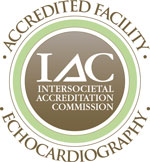Just as the arteries in your heart can become narrowed and blocked by atherosclerosis, so too can the arteries that bring blood to your legs, stomach, head and arms. When these arteries in the outer regions of the body become blocked, the resulting condition is known as peripheral artery disease (PAD). PAD can cause severe pain; without intervention, PAD can cause gangrene that can require amputation.
Luckily, treatment can help. If you have PAD, you can trust the board-certified vascular and endovascular surgeons at CMHVI to provide you with the care you need.
PAD: Learn When It’s More than Leg Pain
PAD is caused by a build-up of plaque in the arteries (most often, of the legs) that restricts blood flow. If you have PAD, you may suffer muscle pain while walking, a condition known as claudication. In severe cases, PAD can cause severe foot pain or gangrene.
Symptoms of PAD may include:
- Leg pain while exercising that does not go away when you stop moving
- Foot or toe wounds that do not heal or that heal slowly
- Coldness in your lower leg or foot
- Reduced growth of toenails or leg hair
- Erectile dysfunction, particularly in men with diabetes
Get a Thorough Diagnosis with a Range of Diagnostic Tests
Our vascular specialists have a range of diagnostic tests they can use to determine whether you have PAD. They include:
- Ankle Brachial Indexes: This test measures blood pressure in your arms and legs for comparative analysis. The ratio of the two measurements can indicate if there is a blood flow problem in the legs.
- Segmental Pressures Test: Like ankle-brachial index testing, this uses two or three additional blood pressure cuffs placed just below the knee, just above the knee and at the upper thigh. Significant drops between body segments may suggest blockages or narrowing in the arteries.
- Arterial Duplex Ultrasound: This painless, non-invasive procedure uses sound waves to gather information and evaluate issues involving the arteries and/or veins of the arms and/or legs.
- Computed Tomographic Angiography (CT): This non-invasive test creates images of the arteries in your legs, abdomen or pelvis.
- Magnetic Resonance Angiography (MRA): This non-invasive test is like a CT but creates images without the use of X-Rays.
- Peripheral angiogram: This is a test that uses dye X-rays to determine whether arteries that bring blood to your legs are narrowed or blocked.
What Are Your Options for Treatment?
Depending on how serious it is, your PAD may be treated in the following ways:
- Diet modification: Many people with PAD have unhealthy cholesterol levels. Your doctor may suggest eating a diet low in saturated fat and trans fats to help lower your cholesterol levels. If you’re overweight, your doctor may recommend weight loss.
- Exercise: Regular activity can be a very effective treatment for PAD and its symptoms. Your doctor may recommend that you participate in our Cardiopulmonary Rehabilitation Program. Cardiac rehabilitation is a medically supervised program to help heart failure patients recover by following an individualized plan that provides evaluation and instruction on physical activity, nutrition, stress management and other health-related areas as needed. Other activities that may benefit you include walking outdoors, treadmill walking and leg exercises designed specifically for people with PAD.
- Smoking Cessation: If you smoke, your doctor can help you find a program to help you quit. Smoking makes PAD worse.
- Managing diabetes: Because diabetes raises the risk of PAD, taking steps to keep your blood sugar under control can help manage PAD.
- Medication: Various medications can help people with PAD. For example, your doctor may prescribe medication for cholesterol, blood pressure or to prevent the formation of blood clots.
- Balloon angioplasty with a stent: A stent is a tiny mesh tube that our doctors implant in an artery to prevent plaque from blocking the blood vessel. After clearing a blockage in an artery with a balloon angioplasty, your doctor uses a catheter to place the stent in the newly opened artery. The stent helps hold the artery open and reduces the chance that plaque will block the artery again.
- Bypass surgery: This procedure uses an implanted blood vessel from elsewhere in your body to create a new path for blood flow around a blocked artery.



